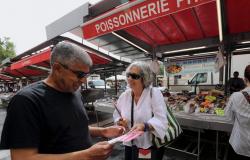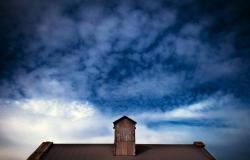In “Topo”, Mathilde Morin explains the toponymy of cities in the Paris region. To learn even more about the history of Malakoff in Hauts-de-Seine, we met Frédérie Lhomme, the city’s archivist.
She was nine years old when she received the book celebrating 100 years of Malakoff. Frederic Lhomme remembers this day as if it were yesterday, it is now 1984 and a large banquet is organized at the Marcel Cerdan gymnasium for the centenary of the city. HAS At the time, the book sat proudly on the bedside table of all Malakoff residents. A precious collection that contains the entire history of Malakoff and its inhabitants. In 1984, little Frédérie learned, from the first page, that the destiny of her town was being played out far, very far from the Île-de-France.
Frédérie Lhomme has kept the book for all these years. Passionate about the history of her town, she is now the archivist of the city of Malakoff.
•
© France 3 PIDF
In 1855, Sevastopol, one of the main cities of Crimea, was about to fall to the allies after a year of siege. The French, the British, the Turks and the Sardinians went on the offensive and took a strategic Russian point: the Malakov fort (which became “Malakoff” in our language). A victory that immediately revived national pride, to the point of creating Malakoff cheeses and Malakoff chocolates that still exist today. But the climax of this celebration was reached with the Malakoff towers that rose up all over France. Buildings to the glory of Napoleon III and the victorious French troops. One of them, you guessed it, was built not far from the eponymous city in a place that looked like a battlefield: the New California of Vanves.
New California is one of the first amusement parks in France. It welcomes thousands of Parisians every day in search of fun. Restaurants, shows, attractions, in Vanves attendance sometimes reaches 12,000 visitors per day, a record in the 19th century. And it is in this festive village that its founder, Alexandre Chauvelot, decides to build a Malakoff tower in 1855. Composed of nine floors, it becomes one of the main attractions of the park.
Malakoff Tower in New California Park
•
© DRAWING AND LITHOGRAPHY BY LEVI / MALAKOFF MUNICIPAL ARCHIVES
Unfortunately, New California soon became a place of debauchery and prostitution was so common that a few years later, the park had to close its doors. On its ruins, housing was built to accommodate the workers and in 1860, the New California subdivision took the name of the famous tower and became the Malakoff subdivision.
Map of New California and the future Malakoff subdivision. The district is separated from Vanves by the railway line on the right. At the top left, the Malakoff tower makes an appearance.
•
© NATIONAL LIBRARY OF FRANCE
Twenty years passed and the “Petit Vanves” district continued to grow despite the loss of the Malakoff tower, destroyed in 1871 during a Prussian siege. In addition to the housing estate, the district now housed a parish, a church and more inhabitants than Vanves, the original commune. Cut off from the main town by a railway line, the residents now formed a quasi-independent community. It was therefore quite natural that in 1883, the split of the two towns was announced. Malakoff officially became a commune in its own right during its first municipal council in 1884.
Malakoff and the communist tradition
Malakoff, like many of its neighbors, is a city built and supported by workers.
Malakoff, like its neighbors, has gradually gentrified over time and is welcoming more and more families working in Paris. But with its 40% social housing and its network of associations, Malakoff has managed to preserve a great social mix. In its seven elementary schools, students are together, whether they live in council housing, in a house or in an architect’s house. The desire to create society is reflected in third places, cultural offerings and events run by local associations.
Malakoff town hall on Place du 11 Novembre. Even today, the mayor is a member of the PCF
•
© France 3 PIDF
A political will defended by a communist town hall because Malakoff is also the standard-bearer of a political movement. A militancy that is not new and which, during the Second World War, pushed occupied France to place the city under special delegation and to empty the streets of its inhabitants. Even today, in Malakoff, we are communists and on market days, strike days or election days, we hand out leaflets at will, tightening the red belt of the Parisian suburbs by a notch.
Besides Malakoff, Melun, Rambouillet, Bagnolet, Issy-les-Moulineaux, Teals or Versailles is another city with a unique history to discover with Mathilde Morin in “Topo“, a series that is both fun and educational, available now on france.tv/idf.






